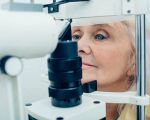- 1-Why-Regular-Kids-Eye-Exams-Are-Essential
- 2-Characteristics-of-Top-Pediatric-Eye-Care-Professionals
- 3-How-to-Choose-the-Best-Eye-Care-Professional-for-Your-Child
- 4-The-Role-of-Technology-in-Modern-Kids-Eye-Exams
- 5-Common-Issues-Identified-During-Kids-Eye-Exams
- 6-Real-Stories-Highlighting-Expert-Kids-Eye-Care
- 7-Where-to-Find-Reliable-Kids-Eye-Care-Services-at-Eye-Docs
1. Why Regular Kids’ Eye Exams Are Essential
Children’s vision health plays a critical role in their overall development, learning, and quality of life. Many parents underestimate how important it is to schedule regular eye exams for their kids. Vision problems can interfere with school performance, social interactions, and even physical activities.
The American Optometric Association recommends that children receive their first comprehensive eye exam at six months old, again at three years, before starting school, and regularly thereafter. Early detection of vision issues can prevent long-term complications and improve treatment outcomes. That’s why finding the best eye care professionals for kids’ eye exams is crucial to safeguard your child’s sight and well-being.
Eye exams for kids differ from adult exams—they require specialists who understand pediatric vision development and are skilled in working with children’s unique needs. Regular checkups enable timely diagnosis of common issues like amblyopia (lazy eye), strabismus (crossed eyes), and refractive errors such as nearsightedness or astigmatism.
2. Characteristics of Top Pediatric Eye Care Professionals
Choosing an eye care provider specializing in children’s eye health requires attention to several key traits. The best pediatric eye specialists combine clinical expertise with a child-friendly approach that puts young patients at ease.
First, expertise in pediatric optometry or ophthalmology is essential. These professionals have advanced training in diagnosing and treating eye conditions common in children. They use techniques adapted to children’s age and cooperation level, making exams both effective and comfortable.
Second, communication skills matter immensely. Top providers create a welcoming environment, explaining procedures in simple terms and using engaging tools or games. This reduces anxiety for children and encourages cooperation, resulting in more accurate assessments.
Third, the ability to offer comprehensive care is a hallmark of exceptional professionals. This includes vision screenings, eye health evaluations, prescribing glasses or contact lenses, and managing complex eye disorders if necessary.
3. How to Choose the Best Eye Care Professional for Your Child
Parents often face challenges when selecting the right eye care professional. To ensure the best care, consider the following factors:
- Credentials and Specialization: Verify if the provider is board-certified and specializes in pediatric eye care.
- Experience with Children: Ask about their experience working with kids, especially if your child has special needs or anxiety about exams.
- Facility and Equipment: Modern offices equipped with child-friendly technology enhance exam accuracy and comfort.
- Recommendations and Reviews: Seek feedback from other parents and trusted sources to gauge provider reputation.
- Insurance and Accessibility: Confirm coverage options and convenient location or hours that fit your family’s schedule.
Careful research and visits to prospective providers help parents find the best fit for their child’s eye health needs.
4. The Role of Technology in Modern Kids’ Eye Exams
Technological advancements have transformed pediatric eye exams, enabling more precise and less invasive diagnostics. Cutting-edge tools like autorefractors, digital retinal imaging, and visual field analyzers provide detailed insights into a child’s eye health quickly and comfortably.
These innovations reduce the need for subjective responses from young children and help identify conditions at very early stages. For example, photoscreening technology can detect risk factors for amblyopia even before a child can cooperate with standard vision tests.
Top eye care professionals invest in up-to-date technology, ensuring that kids receive the most accurate exams possible. This enhances early intervention, leading to better vision outcomes and a more positive exam experience for children.
5. Common Issues Identified During Kids’ Eye Exams
Pediatric eye exams often reveal conditions that may otherwise go unnoticed. Some of the most frequently diagnosed problems include:
5.1 Refractive Errors
Nearsightedness, farsightedness, and astigmatism can affect focus and cause headaches or eye strain. Early correction with glasses helps children perform better in school and daily activities.
5.2 Amblyopia (Lazy Eye)
This condition involves decreased vision in one eye due to poor development and requires prompt treatment to prevent permanent vision loss.
5.3 Strabismus (Crossed Eyes)
Misalignment of the eyes can cause double vision or depth perception problems. Timely diagnosis can lead to effective therapies such as eye patching or surgery.
5.4 Eye Health Concerns
Issues like eye infections, allergies, or congenital abnormalities may also be detected, allowing early medical or surgical care as needed.
Understanding these common problems underscores the importance of routine, expert eye exams for children.
6. Real Stories Highlighting Expert Kids’ Eye Care
Consider the story of Mia, a 7-year-old whose parents noticed she was struggling to read the blackboard at school. After visiting one of the best eye care professionals for kids’ eye exams, Mia was diagnosed with moderate nearsightedness and fitted with glasses tailored to her needs. Within weeks, her confidence and academic performance improved significantly.
In another case, a toddler named Lucas was found to have amblyopia during a routine exam. Thanks to early detection and expert treatment, including patch therapy and vision exercises, Lucas avoided long-term vision impairment.
These stories reflect how professional pediatric eye care can change children’s lives by ensuring their vision health is supported from an early age.
7. Where to Find Reliable Kids’ Eye Care Services at Eye Docs
Finding trustworthy pediatric eye care providers can be overwhelming, but resources like Eye Docs simplify this process. Eye Docs offers curated listings of the best eye care professionals for kids’ eye exams, along with detailed profiles and user reviews.
Whether you need a local optometrist, pediatric ophthalmologist, or specialty clinic, Eye Docs connects parents to qualified professionals who combine clinical expertise with compassionate care. Additionally, Eye Docs provides guidance on insurance coverage, appointment scheduling, and tips to prepare your child for their visit.
Using Eye Docs ensures your child receives the attention and expert evaluation they deserve, setting the foundation for a lifetime of healthy vision.








